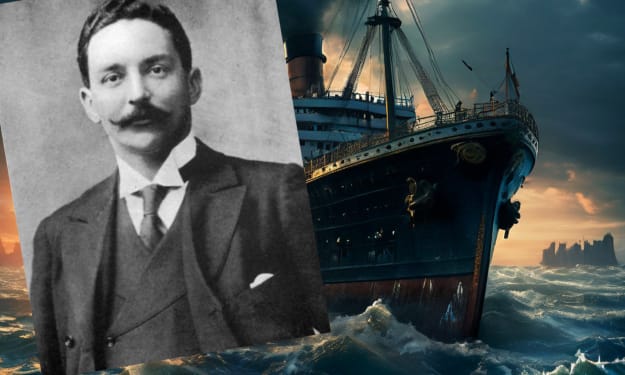The Outbreak of the Great War
Structural and Personal Ways Into Disaster

World War 1, often termed "The Great War," forever changed the face of international relations and the world map. Distinguishing between structural and personal reasons for the outbreak of hostilities refers to the structure-agency debate in international relations theory. This provides a helpful roadmap to understanding the origins, the inevitabilities, and the human failures that led to the disaster.
Dealing with the Security Dilemma
Humans organize in groups that distinguish them from others. The most muscular organizational framework for modern groupism is the nation-state. Domestically, the government, police, and courts guarantee security by functioning as a higher authority equipped with the monopoly of using force. In the international environment, a comparable higher authority is missing. Neither could the League of Nations in the interwar period nor can the United Nations today prevent countries from getting conquered by others. This is called the security dilemma.
As a consequence, self-help is required. The ability of a people or nation-state to defend against enemies is bound to its position in the international system. The more capabilities they have to defend against enemies, the better and the more secure they are. They must form alliances and balance against potential enemies if they are weak.
According to a theory of international relations called "neorealism" (or structural realism), individuals are limited in their ability to influence general processes. If there is a power vacuum, somebody will fill it, no matter how advanced the diplomatic skills of the leader of a weak country are. Structure champions agency. In this reading, World War 1 was inevitable, as it resulted from overarching processes. Scholars putting more emphasis on individual agency, the capacity to make independent, rational, or irrational decisions of political actors, may arrive at a different hypothesis.

Structural issues and World War 1
Structural reasons for the war can be found in deep-rooted economic, social, and political transformations that transpired in the decades preceding 1914. Hobsbawm coined the term "the long 19th century", approaching the 125 years from the French Revolution (1789) to the outbreak of the Great War (1914) as an inseparable historical period in which democracy, capitalism, and nationalism became multiple streams forming societies at their confluence.
The Industrial Revolution brought profound economic changes during this period, redefining Europe's industrial landscape. Rapid industrialization, groundbreaking technological evolutions, and swift urbanization marked this era. As Germany emerged as a formidable industrial power, it engaged in an economic rivalry with Britain, an established political, military, and economic power short of world domination. But around 1900, the overstretched British Empire was at an accelerating downturn vis-à-vis the emerging Germany, and balancing was needed. History shows that turmoil is not far when the status quo changes and uprising countries threaten the hegemon.
Nation-building processes gave birth to nationalistic fervor. Othering, the construction of "Us vs. Them", and the exaggeration of the qualities of the in-group poisoned international relations. Countries began weaponizing sentiments to bolster domestic unity while intimidating rivals. The Balkan region, fueled by nationalism that brought down the Ottoman Empire, became a volatile epicenter in which expansionism (greater Serbia, Greater Bulgaria) and ethnic tensions amalgamized.

Another underlying process, and somewhat the offspring of nationalism, was imperialism and colonial rivalries: The race for dominance in the late 19th and early 20th centuries saw European superpowers scrambling for colonies. This new-world colonization, especially the scramble for Africa, became a hotbed of nationalistic pride and international tension. And it is not by chance that the ruler of the waves, Great Britain, and the "nervous superpower" Germany (V. Ullrich) faced each other with smoking guns. Britain possessed large parts of the world, Germany was a latecomer, but almost nothing was left to distribute.
As a result of perceived threats, alliance systems were established. Europe's political arena was divided by the emergence of two powerful alliance blocs: the Triple Alliance (Germany, Austria-Hungary, Italy) and the Triple Entente (France, Great Britain, Russia). While these alliances aimed to ensure mutual protection and deterrence against potential adversaries, they ironically paved the way for an all-encompassing conflict resulting from an arms race. The security dilemma at its unholy "best."
All those processes paved the way to war. Still, the Great War was not a sudden eruption. It was a climax to mounting tensions ingrained in the preceding century's metamorphosis. And some of the actors making fatal decisions actually did have a choice!
Personal failure and diplomatic underperformance
Agency-based explanations zoom in on the immediate events that escalated into global warfare in 1914. The most prominent among those is the Sarajevo Assassination of Archduke Franz Ferdinand. The violent death of the heir to the Austro-Hungarian throne in Sarajevo by Gavrilo Princip, a Bosnian Serb nationalist, was the immediate spark that ignited the war's flames, a universally recognized catalyst.
Following the assassination, diplomatic relations deteriorated rapidly during the July crisis. Austria-Hungary, with Germany's backing, blamed Serbia. The austere ultimatum given to Serbia and Serbia's subsequent refusal to adhere to all the conditions led Austria-Hungary to wage war – a complete failure of diplomacy. The domino effect of the alliance system followed. A Balkan skirmish soon ballooned into a continental disaster. Russia, in defense of Serbia, began mobilizing its army. Germany responded with a war declaration on Russia. The alliance systems activated, and soon, France, Britain, and even nations outside the immediate dispute were embroiled in the conflict.
Was it a miscalculation, or was it blindness? Austria could have accepted the concessions Serbia made, which were not small. Did Emperor Franz Josef try to distract attention from internal problems? Why did Germany back Austria, although Berlin had little to win but much to lose in the war? Why did leaders not try to find a solution by meeting at a top-level conference? Counterfactual analysis is always a bit speculative. But we may agree that there were alternatives. The Austrian and German Emperors and the Russian Tsar all had the means to pull the break. All three conservative-reactionary leaders showed weak leadership.

Conclusion: Structure and Agency go hand in hand
Understanding both the immediate triggers and the larger, undercurrent themes is vital. Sliding into World War 1 was more than a series of events and individual failures; it was the eruption of long-standing rivalries and of structural determination, including economic competition, imperialism, and nationalistic aspiration. Maybe the outbreak of a general war in Europe was inevitable, but why 1914 and not 1910 or 1912? Emperors and Tsar were the same. Remembering this layered causality reminds us of the importance of a nuanced understanding in our analysis of historical events, ensuring we capture both the forest and the trees.
About the Creator
Jurgen Dieringer
J Dieringer is a professor of international relations by profession and a musician, writer, and chess player by passion. He strives to merge those inputs and tackle the intersection of arts and science.






Comments
Jurgen Dieringer is not accepting comments at the moment
Want to show your support? Send them a one-off tip.